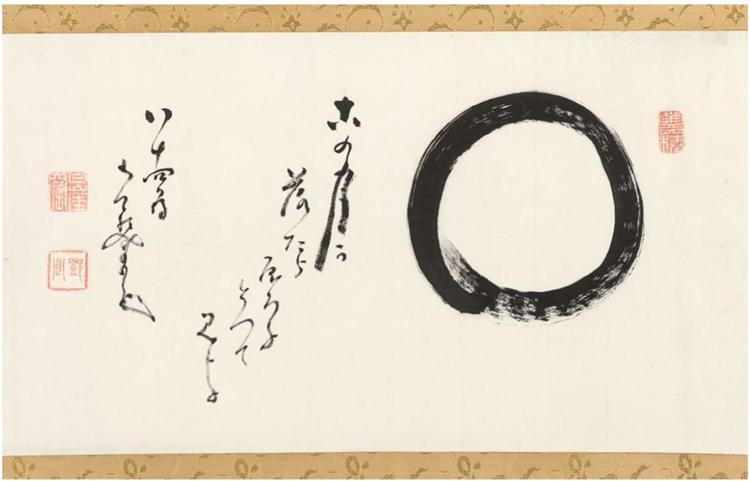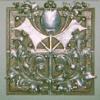
Names, places, characters, events, and incidents are based on the authors' lives and experiences and may be changed to protect personal information. Any resemblances to actual persons (living or dead), organizations, companies, events, or locales are entirely coincidental.
Note: While authors are asked to place warnings on their stories for some moderated content, everyone has different thresholds, and it is your responsibility as a reader to avoid stories or stop reading if something bothers you.
Zero to Hero, a Guide - 4. Essay One: Wabi-Sabi and the Zen sense of humor
.
Wabi-Sabi and the Zen sense of humor
The old adage “Beauty is in the eye of the beholder” is something almost everyone can agree on. In terms of Japanese ascetics and what makes worthy subjects for poetry, they are governed by the concept of wabi-sabi. The two words can more or less be rendered in English as sadness and rust.[1] But what does that mean…?
Well, different people react differently to the same experience. For some, when they stroll along a wooded path and see a log being rotted by the rain, or encounter a lichen-spotted boulder, may think “decay” and no more. For others, the sights remind them of the cycle of life, of how trees live and die so others may replace them in the fullness of time, or regarding the boulder, may pause to think how earthlike it is and associate humans clinging to the surface of our planet.
But take the same experience and view it from an enlightened wabi-sabi perspective and you will notice how the moisture glistens off the pieces of fragmented wood; you think it’s beautiful and lonely. You will notice the boulder and think that even this seemingly immobile thing is temporary; it fell from someplace, and it is slowly – inextricably – moving on. All things/all life is just the same: temporary although appearing fixed.
These feelings are directly linked to a Chinese form of Buddhism which took root and thrived in Japan. In about the year 1200, Zen gained ground and popularity amongst the elite and spread quickly. It taught enlightenment in ways where the acolyte interacted with the world directly. It would be as if the Shakers set up compounds in Manhattan and went out each day to find their simplicity amongst the chaos. This very real struggle to zone in on what matters led to some remarkable art, both visual and literary.
Skewed humor is a trademark of the movement. But why? To me it seems a way to downplay the stress of everyday concerns and embrace the absurdness of life and death itself – to achieve freedom from them, in other words.
Examples of Zen paintings are pretty well-known. The Enso mark is a giant calligraphy “O”, which can stand for the concept of absolute infinity and absolute nihility existing simultaneously (yes, lol, it’s meant to blow your mind; meant to show you that thought itself is nothing but a pointless, vicious circle). Another popular image explored by Zen artists relates to the Buddha’s transfiguration. This moment, when the master died surrounded by his lovers and apostles, is a favorite subject of mainstream Buddhism. Since whiteness is associated with the master, a Zen painter imagined the scene anchored by a giant white daikon radish – the dying Buddha – attended by mournful mice. This of course was meant to be both humorous and sacrilegious. It is arguable what the exact message is supposed to be, but the humor suggests that people not take religious iconography too seriously; instead, perhaps the picture says, be inspired by the natural sights around us all the time.
This same humor can be found in the poetry of 14th century Zen abbot Ikkyu. He once got naked at a dinner being hosted in his honor, laying his vestments in front of his food tray. When asked why, he replied, “Because you serve my robes of office, not the me within them.”
In his verse, he delighted in his eccentric ways, referring to himself as “Crazy Cloud,” the wanderer.
Each day and every minute,
Priests pore over their secret texts in the dark.
Before they go blind, however,
I wish they’d read the epistles
sent daily by the wind and rain;
by the snow and the moonlight.
◇ ◇ ◇
I’d like to offer you
something to soothe you,
but in the Way of Zen,
we don’t have a goddamned thing.
◇ ◇ ◇
Joy and hate; relationships and loneliness;
clarity/shadows; heat/coolness; anger/happiness;
the self and the outsiders –
philosophy and every poetic road to Beauty
leads only to decay and perdition,
but look what we find along the Way!
A path strewn with blossoms of apricot and peach.
He was also famous/infamous for ignoring the precept of priestly celibacy. In fact, he celebrated sex in his writings as a means of connection between human beings and the larger world outside ourselves.
Lovemaking can transcend this life.
The stirrings of a single autumn night of sex
surpass the staid, hundred-year wait
of meditating alone, sitting still.
◇ ◇ ◇
Lust hurts the bearer when deepest,
causing a dearth of poetry and words,
yet now, my pleasure is the most natural,
like a breeze playing through my empty halls.
I hope learning about how to approach the world via wabi-sabi and a Zen sense of humor can add depth to your poetry, especially to your Tanka and Haiku.

the Enso mark
[1] A literal translation would be “isolation” and “oxidation” (as the Japanese language makes no distinction between rust and patina). When Japanese wish to express a feeling of sadness, they rarely use the actual word for it (which is kanashii), but rather choose between sabashii or wabashii instead. Both express a sense of being devoid of human contact, and in using them as a substitute for “sadness”, speak volumes about the well-known Japanese collective thinking. The nuances in the terms are these: wabi also conveys a sense of the poor or rustic; thus a lonely rich man can only be sabashii in his isolation.
_
-
 4
4
-
 5
5
Names, places, characters, events, and incidents are based on the authors' lives and experiences and may be changed to protect personal information. Any resemblances to actual persons (living or dead), organizations, companies, events, or locales are entirely coincidental.
Note: While authors are asked to place warnings on their stories for some moderated content, everyone has different thresholds, and it is your responsibility as a reader to avoid stories or stop reading if something bothers you.
Recommended Comments
Chapter Comments
-
Newsletter
Sign UpSign Up and get an occasional Newsletter. Fill out your profile with favorite genres and say yes to genre news to get the monthly update for your favorite genres.



